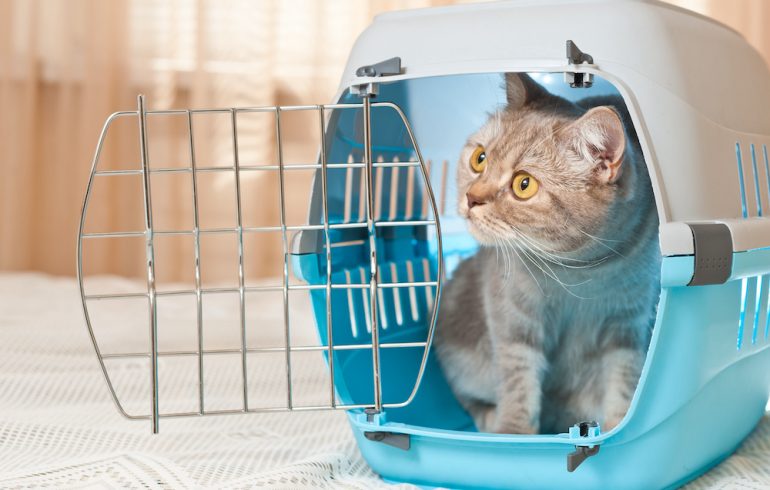Summer travel season is at its height! If you intend to take your pet along for the ride, here are some important tips for pet-friendly travel.
Preparation pet-friendly travel
- Have your veterinarian examine your pet before the trip. Get copies of her vaccine record, since some states may require it in certain circumstances.
- Put together a pet-friendly travel kit: food, bowls, treats, bottled water, medications, leash, litter, a poop scoop with plastic disposal bags, a travel crate and a couple of favorite toys.
- Feed your pet a light meal a few hours before departure. Keep her hydrated during the trip.
Travel by car
- If you’re planning a road trip and your pet does not have much car experience, prepare her by taking her on short excursions. Incrementally lengthen these trips as your pet becomes more familiar with riding in a car.
- Find a way of securing your pet in the car. Having the pet loose in the vehicle puts her at risk in an accident, not to mention that an anxious pet in the car can distract the driver. This is especially true with cats.
- Securing your pet in a USDA-approved travel crate is best. The crate should be well ventilated and big enough inside for the pet to stand and turn around. Have a blanket on which she can lie down and, with a cat, some shredded paper to absorb any accidents. Loop a seat belt through the handle to secure the crate.
- Alternatively, If your pet is a dog, you can secure him with a seat belt restraint attachment. These hook to a halter the dog wears.
- Take plenty of stops to allow your pet to relieve herself and get out of the crate. Always leash the pet during these breaks.
- Never leave a pet alone in a parked car. Even on days with moderate temperatures, the sun can quickly warm the inside of a car to heatstroke levels. In some states, it is a crime to leave a pet in a parked car on a hot day.
Travel by air
Air travel is not recommended for most animals. If it is a must, here is how to fly pet-friendly.
- If your dog or cat is small, it may be possible for him to fly in the cabin with you, so long as he can safely fit in a crate that you stow beneath the seat in front of you. Check with your airline for details. Larger pets can fly only in the cargo section of the plane, although some airlines have suspended this service during the Covid-19 pandemic. Again, check with your airline. Plan to pay an added fee for flying with your pet.
- Wherever in the plane, your pet will be flying, he’ll benefit from direct flights. Plane changes add stress to your dog’s or cat’s experience. If he’s in the cargo hold, he might also be left sitting on the baggage truck between flights during poor weather.
- Do not tranquilize your pet with medication. Consult with your veterinarian for ways to calm her.
- As with road travel, secure your pet in a properly sized USDA-approved crate.
- Have your pet wear tags with your name and contact information. Likewise, clearly mark the crate with your name and info.
- If your pet is traveling in cargo, notify airline personnel, including the booking agent, airport check-in personnel and the gate attendant, that you have a pet in the cargo hold.
Related – When Accidents Happen: Removing Pet Stains and Odors on Floors


